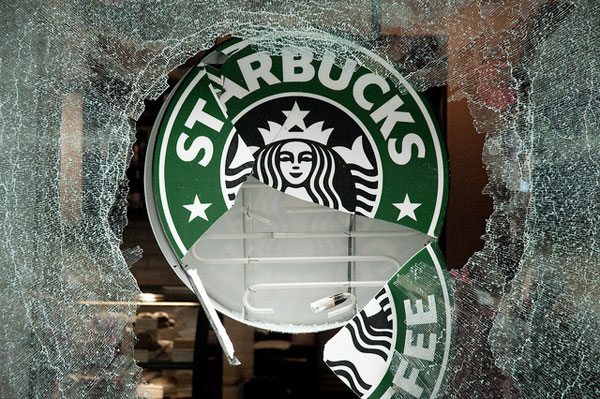
April 18, 2018; The Guardian
The Starbucks “incident” of two Black men—we now know their names are Rashon Nelson and Donte Robinson—being arrested at Starbucks for sitting at a table without buying anything while they waited for a third person has become emblematic of what is wrong not only with the US, but also with the nonprofit sector.
Of the many articles written about the incident this week, one that stands out to me is by Hina Tai in the Guardian headlined, “Why Starbucks shouldn’t be praised for its misguided racism workshops.” Tai hits close to home when she writes,
While the line between implicit bias and explicit bias can become murky at times, the Starbucks incident is a clear case of explicit bias and to call it anything less is outrageous. To consciously pick up the phone to call the police on two black men sitting at a table doing nothing is an explicit act.
What is more concerning than how this incident is being represented to the masses is the willingness of nonprofits and social justice organizations to discuss overt discriminatory incidents through the lens of implicit bias. Implicit bias frames offer these organizations an ability to discuss race in a disarming, nonthreatening means because the idea is implicit bias affects everyone’s minds unconsciously and no one is safe from its grasp.
Sign up for our free newsletters
Subscribe to NPQ's newsletters to have our top stories delivered directly to your inbox.
By signing up, you agree to our privacy policy and terms of use, and to receive messages from NPQ and our partners.
Not only is this something nonprofits are aiding—Tai notes the experts working with Starbucks, including Jonathan Greenblatt, CEO of the Anti-Defamation League, “a staunch supporter of Israel [that] advocates against the Boycott, Divestment and Sanctions movement, which calls for an end to Palestinian occupation”—we are also playing dual roles as savior and perpetrator. How many of us in nonprofits can say we go a day without seeing the same dynamics of power at work in our organizations? We may not be calling the police on Black people—something The Root’s Jason Johnson calls “a legal extension of white supremacy,” where “a white person uses the cops as his or her personal racism valets”—but we have so many other ways of taking more than our share, which is ultimately what power dynamics are all about.
If we are real, we will look at the fact that while we demand to see Starbucks’ policies and, where they fall short, push for redress, many of us work in nonprofits that don’t even have grievance procedures. We—really, I mean white leaders, but I’ll be generous here—hide behind the “good guy” mask and use our power to control the organizational narrative in a way that lets us do all kinds of power grabs without ever being held to account.
In yet another article, this one in Slate, which is a conversation among four people, the authors summarize this as being “a black person in a public, predominantly white space.” One of them, Jamelle Bouie, gets more specific when he calls these spaces, “putatively diverse, but curated for the experiences of white people.”
All people of color perform in these spaces at one time or another, if not daily. It’s part of the “invisible work” nonprofits like to talk about. Perhaps it’s time for nonprofits to expand the #MeToo moment to include all kinds of violations of power. At the very least, we should be honest. The zeitgeist is demanding truth in a time of assertable realities.—Cyndi Suarez













